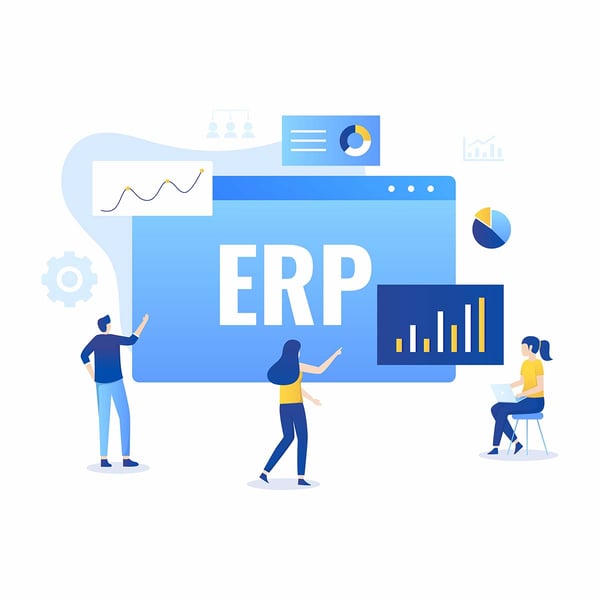
Embarking on the journey for the best ERP implementation requires a plan; it is no simple feat. The key to true success in an ERP system implementation is understanding the process and overcoming challenges. Part of this is understanding that an ERP system cannot be implemented in one day. It is not a process to be rushed, and there are necessary steps to take to ensure that the end result is the best that it can be.
We have established the following ERP implementation phases and in-depth explanations of each are available in our article on Understanding ERP Implementation Phases. In this article, we will discuss examples of specific instances of these phases.
Establish the Project
A company must first and foremost determine the need to pursue an ERP system implementation. Perhaps a company is struggling to keep track of their business transactions or recently got new leadership or is expanding into new markets. Each of these is a valid reason for making the decision to implement a new ERP system.
Initiation
Once you have established the project, you must establish a team to propel and partake in the project. If your ERP implementation is HR-focused, our advice is that you would involve the HR team. Including the end-users in the implementation process is vital to the success of the project. These are the individuals who will eventually use the chosen ERP, and if they are not satisfied with the software of choice, the implementation could be disastrous.
Analyze Your Needs
A problem can’t be solved until the problem is identified. If something in your business isn’t working right, don’t leave it at that; get to the root of the issue. It may seem that your accounting team is underperforming; however, it may be that the software they are using is outdated and stagnant.
Design the New Software
The next step is to communicate requirements to the developers. If a construction company needs to keep track of Davis-Bacon certified payroll or prevailing wage data, it is necessary that those needs are communicated to the developers on the project.
Configure the New Software
After design, the time comes for configuration. This is the point at which developers are able to build in a company’s specific needs from the software. Some software packages can be challenging to customize, which is why it is vital to involve end-users throughout the entire process. Again, a construction company may want to consider an ERP that allows you to build out custom modules to meet unique needs.
User Acceptance Testing
It should be clear by now that choosing the right people to test new software is extremely important. If your implementation team is too small, consisting of only company officers, or made up of the least busy individuals, you are dooming your ERP system implementation. Your team should consist of company leaders, various end-users, and project directors. Asking members of the HR team to test out accounting software will be highly unproductive and might cause lasting issues for the entire company.
Train the Users
Truly setting your company up for success requires practice and training. This is the time to train end-users until they are comfortable with the new software. Again, leaving the HR department to test new accounting software benefits nobody. The accounting department should be testing new accounting software; likewise, the HR department should be testing HR software. This is a phase to be patient with, as rushing the process could force people onto a program that they are not equipped to use.
Integrate the New Software
Now that the software has been tested by users, the time has come to integrate. This essentially means that the new software needs to communicate with other software. Again, this step requires sufficient training to ensure quality.
Deploy the New Software
After the successful completion of the previous seven steps, it’s finally time to launch your new ERP system. The final phase is a successful go-live. Employees will now become fully dependent on the new software, and they should feel comfortable with that if the previous steps have been properly completed. As time goes on, pain points will be limited, and the rewards will become evident.
Following these steps increases your company’s chances of a successful ERP system implementation.
If you’re still unsure of how to approach your ERP system implementation, we are here to help. Contact ERP Advisors Group today to set up a free consultation.

